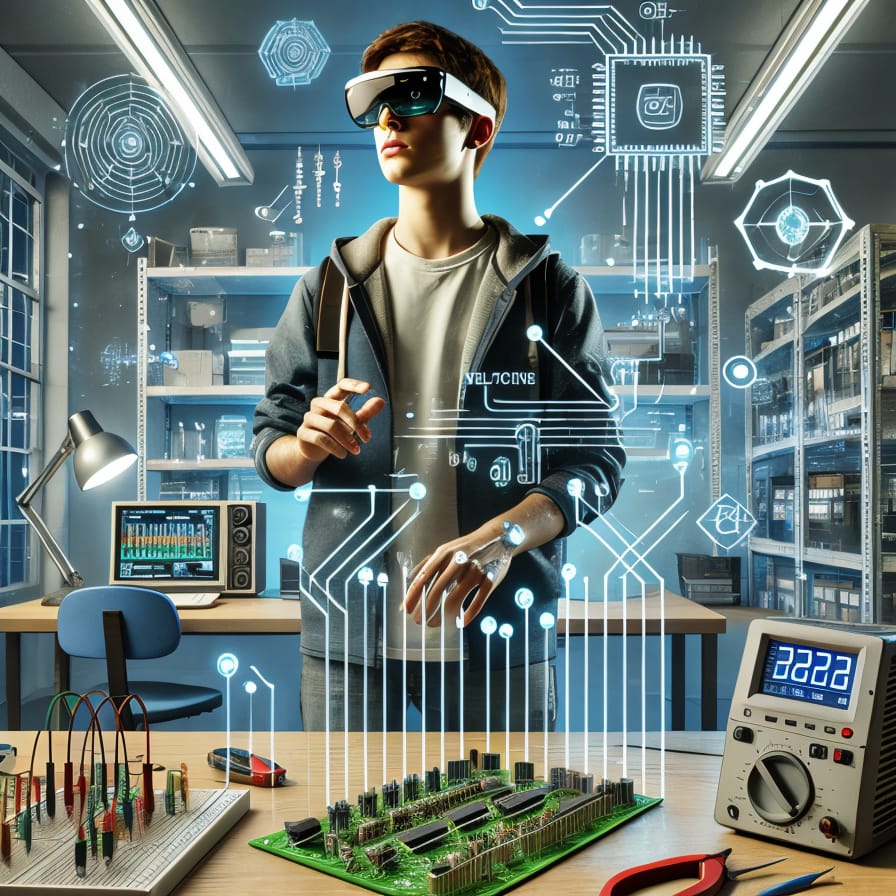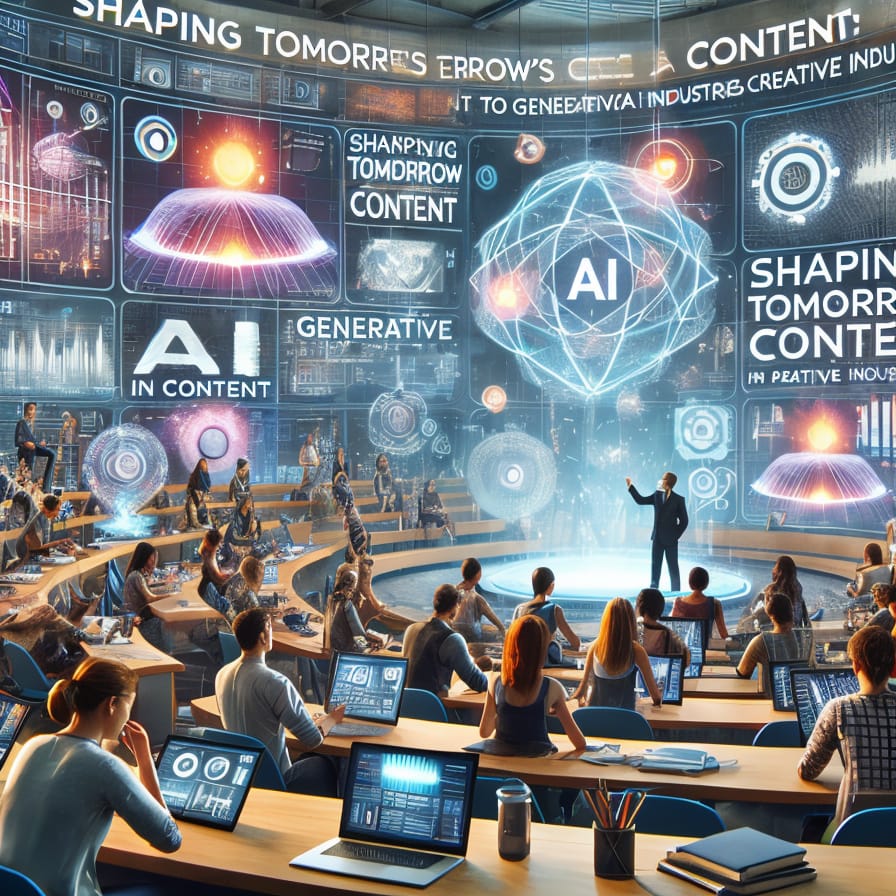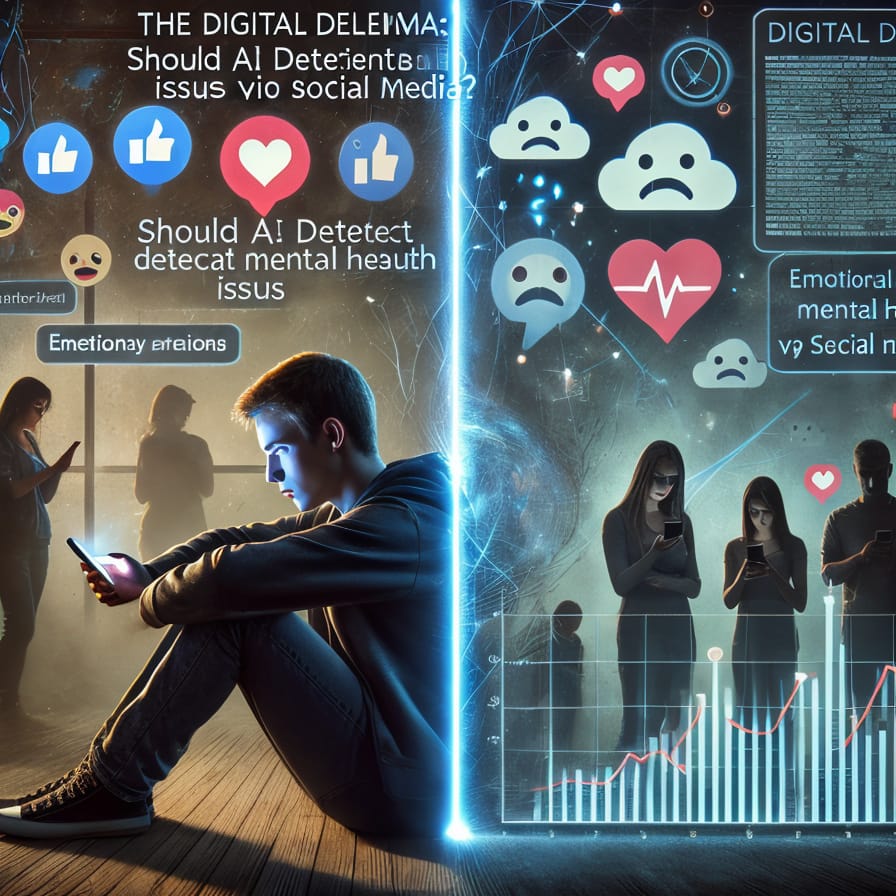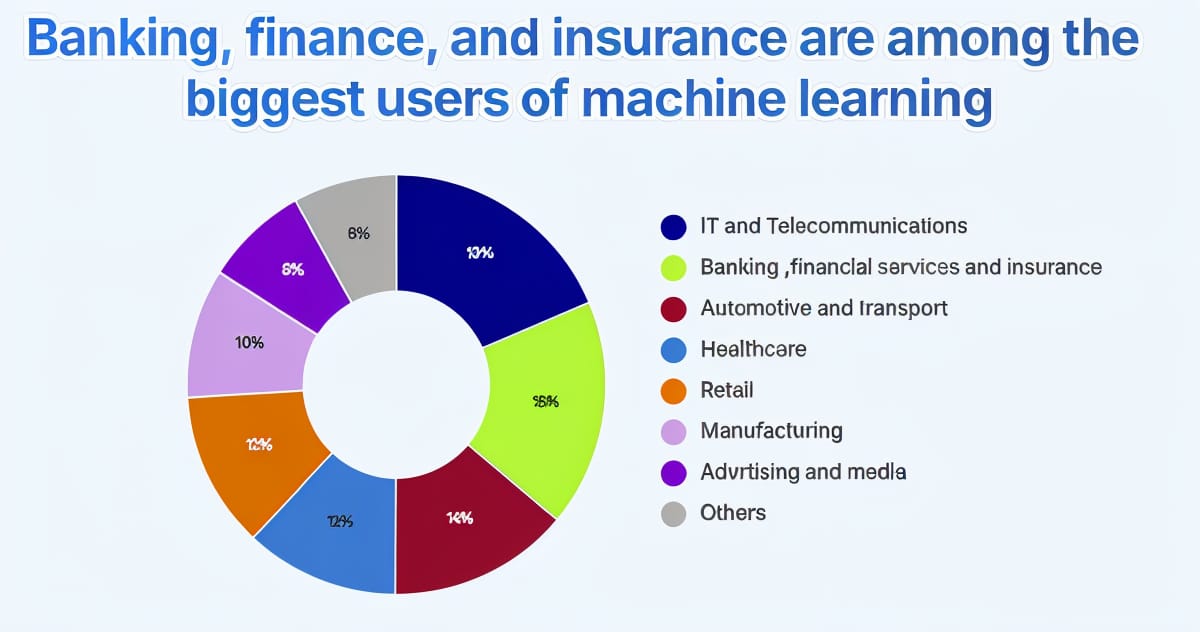- Algo4hi
- Posts
- Algo4hi Decoding: Your Guide to AI's Impact – Seeing Beyond, Thinking Smart, & Creating New Worlds
Algo4hi Decoding: Your Guide to AI's Impact – Seeing Beyond, Thinking Smart, & Creating New Worlds
Conscience. Creativity. Core
Welcome, Humans.
Here's what you'll be exploring in this post:
1. Algo Spotlight: The Week’s Big Idea
2. Domain Dash: AI Across Engineering
3. Career Byte: Your Path to the Future
4. Ethics Bit: The Algo Dilemma
5. Quick Bits: Fun & Fast
1. Algo Spotlight: The Week’s Big Idea
The "Choose Your Own Adventure" Algorithm: Mastering Decision Trees for Every Engineer
As an algorithmic specialist, I've seen countless complex datasets, and one of the most elegant and intuitive tools in our machine learning arsenal is the Decision Tree. For engineering students across every domain – be it Mechanical, Civil, EEE, ECE, Computer Science, IT, or Bio-Engineering – understanding Decision Trees isn't just about learning another algorithm; it's about mastering a powerful problem-solving framework that mimics how we, as humans, make decisions.

What is a Decision Tree? (Think Flowchart Power)
Imagine you're trying to decide if you should study for an exam or go out with friends. You might ask:
"Is the exam tomorrow?" (If no, go out)
"If yes, have I studied enough?" (If yes, go out; if no, study!)
A Decision Tree algorithm does exactly this, but with data. It's a flowchart-like structure where:
Each internal node represents a "test" on an attribute (e.g., "Is temperature > 100°C?").
Each branch represents the outcome of the test (e.g., "Yes" or "No").
Each leaf node (the end of the path) represents a classification or decision (e.g., "System OK," "System Faulty," "Go out," "Study").
The algorithm learns these optimal "questions" and "paths" by analyzing existing, labeled data. It continuously splits the data based on attributes that best separate the different outcomes, creating a tree that guides future predictions.
Why Decision Trees are an Engineer's Best Friend:
Decision Trees are particularly beloved by engineers for their interpretability. Unlike some "black box" AI models, you can literally see the logic the algorithm uses to arrive at a decision. This transparency is invaluable in engineering, where understanding why a system made a particular recommendation (e.g., why a bridge segment is flagged for maintenance) is as crucial as the recommendation itself.
Real-World Engineering Applications:
Mechanical Engineering: Predictive Maintenance Diagnosis:
Example: A turbine sensor might feed data like "Vibration Level," "Bearing Temperature," "Oil Pressure." A Decision Tree can learn to diagnose "Normal Operation," "Minor Anomaly," or "Imminent Failure" by asking a series of questions: "Is Vibration Level high?" -> "Is Bearing Temperature rising?" -> "Oil Pressure dropping?" This helps engineers schedule maintenance before a breakdown.
Civil Engineering: Material Quality Control & Risk Assessment:
Example: Deciding if a batch of concrete meets standards based on features like "Compressive Strength," "Water-Cement Ratio," "Curing Time." A Decision Tree can quickly classify "Pass," "Fail - Needs Retest," or "Fail - Reject." It can also assess project risks based on parameters like soil type, weather, and labor availability.
Electrical & Electronics Engineering: Circuit Fault Diagnosis:
Example: Troubleshooting a circuit board. Input features might be voltage readings at various points, current draw, or component temperatures. A Decision Tree can be trained to pinpoint the most likely "faulty component" by asking sequential questions about these readings.
Computer Science & IT: Customer Churn Prediction & Fraud Detection:
Example: Predicting if a user will churn (stop using a service) based on "login frequency," "feature usage," "support calls." Or detecting credit card fraud based on "transaction amount," "location," "time of day." Decision Trees provide clear reasons for their predictions.
Bio-Engineering: Disease Diagnosis & Treatment Protocols:
Example: Helping diagnose a disease based on patient symptoms, lab test results, and medical history. The tree guides through a series of symptoms (e.g., "Fever present?", "Cough type?"). This helps in developing intuitive decision-support systems for medical professionals.
Why Learning Decision Trees is Critical for Your Career Roadmap:
Mastering Decision Trees is a fantastic entry point into the world of Machine Learning for any engineer. They are:
Foundational: Understanding them lays the groundwork for more complex ensemble methods like Random Forests and Gradient Boosting Machines (which are essentially many Decision Trees working together).
Highly Applicable: Their interpretability makes them valuable in industries where transparency and explainability are crucial (e.g., healthcare, finance, critical infrastructure).
Practical: You can quickly prototype solutions and gain initial insights from data.
In an era where data-driven decision-making is paramount, the ability to build, understand, and explain a Decision Tree gives you a powerful tool to solve problems across disciplines. So, dive in, build your first Decision Tree, and start mapping out your "choose your own adventure" path in the exciting world of AI!
2. Domain Dash: AI Across Engineering
Circuitry Comes Alive: Augmented Reality - Your New Superpower for Electrical Engineering!
Hey future Electrical Engineers! Ever stared at a complex circuit diagram, lost in a maze of lines and symbols, wishing you could just reach in and see the electricity flow? Or struggled to troubleshoot a massive industrial control panel, trying to trace wires through a jumble of components? Well, get ready for a game-changer: Augmented Reality (AR).
AR isn't just for gaming filters or Pokémon Go anymore. It's rapidly becoming an indispensable tool that's transforming how electrical engineers design, analyze, and troubleshoot complex systems. Imagine literally overlaying digital information onto your real-world view – it's like having X-ray vision for circuits, bringing static diagrams and hidden components to life.
What is Augmented Reality (AR)?
Unlike Virtual Reality (VR) which completely immerses you in a digital world, AR augments your real environment. It uses smart devices like tablets, smartphones, or specialized AR glasses to superimpose computer-generated images, data, and interactive elements directly onto what you're seeing in reality.

How AR is Revolutionizing Electrical Engineering:
Immersive Circuit Design and Visualization:
Beyond 2D Schematics: Forget flat diagrams! With AR, you can project a 3D holographic model of your circuit design right onto your workbench or even into an empty space. You can walk around it, view it from any angle, and understand spatial relationships between components intuitively.
Real-time Simulation Overlay: Imagine an AR app showing you simulated current flow, voltage drops, and electromagnetic fields over your physical circuit prototype. This instant visual feedback transforms abstract concepts into tangible experiences, making learning incredibly engaging and design flaws immediately obvious.
Collaborative Design: Teams can work on a virtual circuit model together, sharing notes and making real-time adjustments while physically separated.
Revolutionizing Troubleshooting and Maintenance:
X-Ray Vision for Panels: Picture standing in front of a giant industrial control panel with your AR glasses on. Instead of hunting through manuals, the AR system immediately highlights the problematic component, overlays its live voltage readings, displays fault codes, and even shows step-by-step repair instructions right on top of the physical hardware. This slashes diagnostic time.
Guided Assembly and Disassembly: For complex machinery like switchgear or power transformers, AR can project assembly guides directly onto the physical unit, showing where each bolt goes or how wires connect, reducing errors and training time for technicians.
Remote Expert Assistance: A technician in a remote substation (perhaps in a village in Tamil Nadu) could wear AR glasses, allowing an expert sitting in Bengaluru to see exactly what they see, draw annotations in their field of view, and guide them through complex repairs in real-time, without having to travel. This is a game-changer for critical infrastructure maintenance.
Your Future as an AR-Empowered EE:
For you, as aspiring Electrical Engineers, understanding AR is not just a cool skill; it's a future-proofing necessity. You'll be the ones designing the electrical systems that power AR devices, developing the sensors that feed AR applications, and, crucially, integrating AR tools into industrial workflows. Learning about AR now puts you ahead of the curve, making you indispensable in a world where digital overlays are becoming as vital as physical blueprints.
So, get ready to see circuits in a whole new light. Augmented Reality isn't just enhancing our vision; it's empowering electrical engineers to interact with their world in ways we once only dreamed of. The future of electrical design and maintenance is here, and it's augmented!
3. Career Byte: Your Path to the Future
Shaping Tomorrow's Content: The Academic Professional's Guide to Generative AI in Creative Industries
As academic professionals, our role extends beyond imparting knowledge; it's about anticipating the future and preparing our students for the careers that are emerging now. The rapid evolution of Generative AI has flung open a new dimension in content creation and design, sparking both excitement and apprehension. It's imperative that we, and our students, understand not just the 'what' but the 'how' and the 'where' of this transformative technology, recognizing the unprecedented opportunities for engineers in seemingly non-traditional creative fields.
The Generative AI Revolution: From Automation to Augmentation
Generative AI refers to AI models capable of creating new, original content – be it text, images, music, video, or even 3D models – that often rivals human output. Think of tools like Midjourney, DALL-E, Stable Diffusion, ChatGPT, or Suno AI. This isn't just about automating repetitive tasks; it's about augmenting human creativity and expanding the boundaries of what's possible in content creation and design.
For too long, "creative industries" were viewed as distinct from "engineering" disciplines. Generative AI is dismantling this silo, revealing a rich intersection where technical acumen meets artistic vision.

New Roles for Engineers in a Creative World:
This paradigm shift isn't eliminating human creatives; it's creating entirely new roles and demanding a novel blend of skills. For our engineering students, this presents a fertile ground for career exploration:
Prompt Engineers / AI Alchemists: No longer just programmers, these engineers become expert communicators with AI. They craft precise, insightful prompts to guide generative models, transforming vague ideas into concrete creative outputs. This role demands not just technical understanding but also a deep appreciation for language, aesthetics, and creative intent.
Impact for Engineering Students: Sharpens communication, critical thinking, and iterative problem-solving in a creative context.
AI Tool Developers for Creatives: This is the core engineering role. It involves building the next generation of intuitive, powerful generative AI tools and platforms that artists, designers, writers, and musicians will use. This requires expertise in machine learning, user experience (UX) design, cloud infrastructure, and often, specialized knowledge of creative software integrations.
Impact for Engineering Students: Direct application of ML, software development, and UI/UX principles in a highly innovative domain.
AI Art/Content Curators & Editors: As generative AI produces vast amounts of content, there's a need for engineers who can develop AI-powered tools to filter, categorize, refine, and optimize this output for specific creative projects or platforms. This might involve building AI for automated quality control or style consistency.
Impact for Engineering Students: Develops skills in data curation, quality assurance, and intelligent content management.
Ethical AI Designers for Creative Industries: The rise of generative AI brings complex ethical challenges (e.g., copyright, deepfakes, bias in generated content). Engineers specializing in AI ethics are crucial for developing responsible generative models and features that ensure fair use, transparency, and prevent misuse.
Impact for Engineering Students: Fosters a crucial understanding of responsible AI development and its societal implications, especially for intellectual property and trust.
AI-Driven Creative Workflow Architects: These engineers design and optimize entire creative pipelines that integrate generative AI tools. This could involve automating repetitive tasks (e.g., generating endless design variations, creating first drafts of marketing copy) to free up human creatives for higher-level ideation and refinement.
Impact for Engineering Students: Strong emphasis on system design, automation, and workflow optimization.
"Synthetic Media" Technologists: As deepfakes evolve, engineers will be needed not just for detection (as discussed previously), but also for creating responsible synthetic media for legitimate purposes (e.g., historical reconstructions, virtual production in film, personalized digital avatars).
The transformation being wrought by Generative AI in creative industries is profound. It's no longer just about engineers building tools for creatives; it's about engineers becoming integral partners in the creative process itself. As academic professionals, recognizing and actively preparing our students for these innovative roles ensures they are not merely spectators, but active architects of the future's digital masterpieces. This is a thrilling frontier, and our students are poised to lead the charge.
4. Ethics Bit: The Algo Dilemma
The Digital Dilemma: Should AI Detect Mental Health Issues via Social Media?
As an Ethical AI decision-maker, this question cuts to the core of our responsibilities. The idea of leveraging Natural Language Processing (NLP) to monitor social media posts for mental health red flags is undeniably appealing, driven by a compassionate desire to offer support to those in distress. However, it immediately collides with a fundamental human right: personal privacy and user autonomy. Navigating this intricate balance requires not just technological prowess, but profound ethical foresight and a commitment to human-centric design.

The promise is compelling. Imagine an AI system sifting through billions of public social media posts, identifying subtle language patterns, shifts in sentiment, or expressions of hopelessness that might indicate a user is struggling with depression, anxiety, or even suicidal ideation. This AI could potentially alert support networks, offer crisis resources, or connect individuals with professional help long before they might seek it on their own. In a country like India, where mental health stigma remains a significant barrier to seeking help, and where social media engagement is astronomical, the potential for early intervention could save lives and alleviate immense suffering.
The Solution: A Framework for Ethical AI in Mental Health Support
As an Ethical AI decision-maker, my conclusion is clear: AI should absolutely be used to support mental health, but never without explicit, informed user consent and control. The power of NLP should be harnessed to empower individuals, not to surveil them.
Here's an ethically acceptable solution framework:
Opt-In, Not Opt-Out, and Granular Consent:
User Choice is Paramount: Individuals must actively choose to enable mental health analysis on their social media data. This cannot be a default setting.
Clear Purpose & Transparency: Before opting in, users must be clearly informed (in simple, understandable language, perhaps even multiple Indian languages) about what data will be analyzed, how it will be analyzed, who will see the insights, and what actions (e.g., suggesting resources, alerting a chosen contact) will be taken.
Granular Control: Users should have the option to permit analysis on specific types of posts (e.g., only private messages to designated support groups), specific topics, or for specific durations.
Focus on Resource Provision, Not Diagnosis:
The AI's role should be to identify potential distress signals and proactively offer pathways to support, not to make a clinical diagnosis. It should be a digital signpost, not a digital doctor.
If the AI detects patterns, it should gently and privately suggest curated, verified mental health resources (helplines, support groups, self-help tools) directly to the user within the platform's private interface.
No Sharing Without Explicit User Action:
Insights or alerts should never be shared with third parties (parents, employers, police) unless the user has explicitly designated an emergency contact who has also opted into receiving such alerts under specific conditions.
The raw data should remain private and never be used for advertising, profiling, or any purpose other than the agreed-upon mental health support.
Human-in-the-Loop Verification and Oversight:
For any high-stakes intervention (e.g., suggesting a crisis hotline), there should be a human oversight mechanism where trained professionals review AI flags for context and accuracy before any action.
Regular audits of the AI models for bias, particularly concerning cultural and linguistic nuances in India, are essential.
Educational Initiatives:
Platforms should invest in robust digital literacy campaigns across India, educating users about the ethical use of AI in mental health, the importance of privacy, and how to safely navigate such features.
By adopting this consent-driven, resource-focused, and privacy-respecting framework, we can harness the immense potential of AI and NLP to foster a supportive digital environment for mental well-being, while steadfastly upholding the fundamental rights of every individual. The goal is not just detection, but empathetic, ethical empowerment.
5. Quick Bits: Fun & Fast
Statistics of the Week
AI spending in the financial sector is projected to grow significantly, increasing from $35 billion in 2023 to $97 billion in 2027, reflecting a 29% CAGR.
The banking industry is expected to see a substantial rise in investment in generative AI, reaching $84.99 billion by 2030 with an impressive 55.55% CAGR.
AI adoption is anticipated to generate significant economic benefits across banking sectors, adding $321 billion in value to corporate banking and $306 billion to retail banking through successful implementations.

Algo quiz
Which emerging AI role focuses on crafting effective and specific instructions to guide large language models (LLMs) to produce desired outputs, highlighting the importance of human-AI communication?
a) AI Architect
b) Data Wrangler
c) Prompt Engineer
d) Robotics Technician
e) AI Ethicist
Write an answer to https://forms.cloud.microsoft/r/Twq1dWuzRR, the correct answering student will get a surprising gift, and the winner along with the answer will be published in the next week’s edition.
🚨 Note:
🚀 Submit your answer now!
🎯 Winners will be chosen at random from all correct entries.
⏳ Responses will be accepted only till 20th July 2025.
📢 The result will be announced before the next newsletter goes live!
Tools Tip
Unleashing Academic Potential: How Notion Becomes an Engineering Student's Strategic Command Center
In the demanding world of academic engineering, students are constantly juggling lectures, lab reports, complex problem sets, group projects, and internship applications. Traditional methods of note-taking and organization often fall short. This is where Notion (https://www.notion.com/) emerges not just as another productivity app, but as a flexible, all-encompassing digital workspace that can fundamentally transform how students manage their academic lives.
Notion is a versatile platform that blends notes, databases, wikis, project management tools, and more into a single, highly customizable environment. It operates on a modular "block" system, allowing users to build pages tailored precisely to their needs, moving far beyond the limitations of linear documents or rigid spreadsheets. For the engineering student, this adaptability is its superpower.
Why Notion is an Engineering Student's Game-Changer:
Unified Knowledge Hub: Your Digital Brain for Complex Subjects
Consolidate Everything: Imagine having all your course materials – lecture notes, textbook summaries, research papers, problem solutions, and even relevant YouTube links – in one interconnected space. Notion allows you to link pages, embed files, and create structured wikis for each subject, making revision incredibly efficient.
Interactive Notes: Beyond plain text, you can embed code blocks, equations (using LaTeX), create toggles for hiding/revealing solutions, and even link concepts across different courses. This dynamic note-taking approach mirrors the interconnectedness of engineering disciplines.
Streamlined Project and Lab Management: From Concept to Completion
Kanban Boards for Projects: For group projects or lab experiments, Notion's database feature can be transformed into Kanban boards (like Trello), allowing teams to visualize tasks, assign responsibilities, set deadlines, and track progress collaboratively.
Experiment Logs & Data Tracking: Create structured pages for each lab experiment, including objectives, procedures, data tables, analysis, and conclusions. You can even embed graphs or external data files directly.
Report Outlines & Drafts: Outline your lab reports or project proposals directly in Notion, leveraging its rich text editing features and easy integration of visuals.
Personalized Learning & Study Planner: Optimize Your Time
Customizable Dashboards: Design a personalized "Student Dashboard" with quick links to active courses, upcoming deadlines, study schedules, and daily to-do lists.
Spaced Repetition Systems (SRS): While not built-in, students can create simple SRS systems using Notion databases to track concepts to review, ensuring effective long-term memory retention for complex engineering principles.
Goal Tracking: Set and monitor academic goals, professional development targets, or even personal habits directly within your workspace.
Career & Professional Development Hub: Building Your Future
Internship/Job Application Tracker: Create a database to manage your job applications – company name, role, application date, status, interview notes, and follow-up reminders.
Portfolio Showcase (Initial Drafts): While not a public portfolio platform, Notion is excellent for drafting and organizing content for your professional portfolio, linking to GitHub repos or project demos.
Networking CRM: Keep track of professional contacts, their details, and interaction notes.
Making Notion Work for You:
The beauty of Notion lies in its blank canvas approach. It might seem overwhelming at first, but a quick search for "Notion templates for students" or "Notion engineering student dashboard" will reveal a vast community-driven library of pre-built solutions you can adapt. Start simple, explore features as needed, and gradually build out your ideal academic workspace.
Conclusion:
For today's engineering students, academic success demands more than just intelligence; it requires superior organization, efficient information management, and effective collaboration. Notion offers a uniquely flexible and powerful platform to achieve all this. By embracing Notion, students can not only streamline their demanding coursework but also cultivate invaluable organizational skills that will serve them well in their professional careers. It's time to transform your academic chaos into a strategic command center, unleashing your full potential and making your engineering journey smoother and more impactful.
Unlock the Power of AI With the Complete Marketing Automation Playbook
Discover how to reclaim your time and scale smarter with AI-driven workflows that actually work. You’ll get frameworks, strategies, and templates you can put to use immediately to streamline and supercharge your marketing:
A detailed audit framework for your current marketing workflows
Step-by-step guidance for choosing the right AI-powered automations
Pro tips for improving personalization without losing the human touch
Tools and templates to speed up implementation
Built to help you automate the busywork and focus on work that actually makes an impact.


Reply